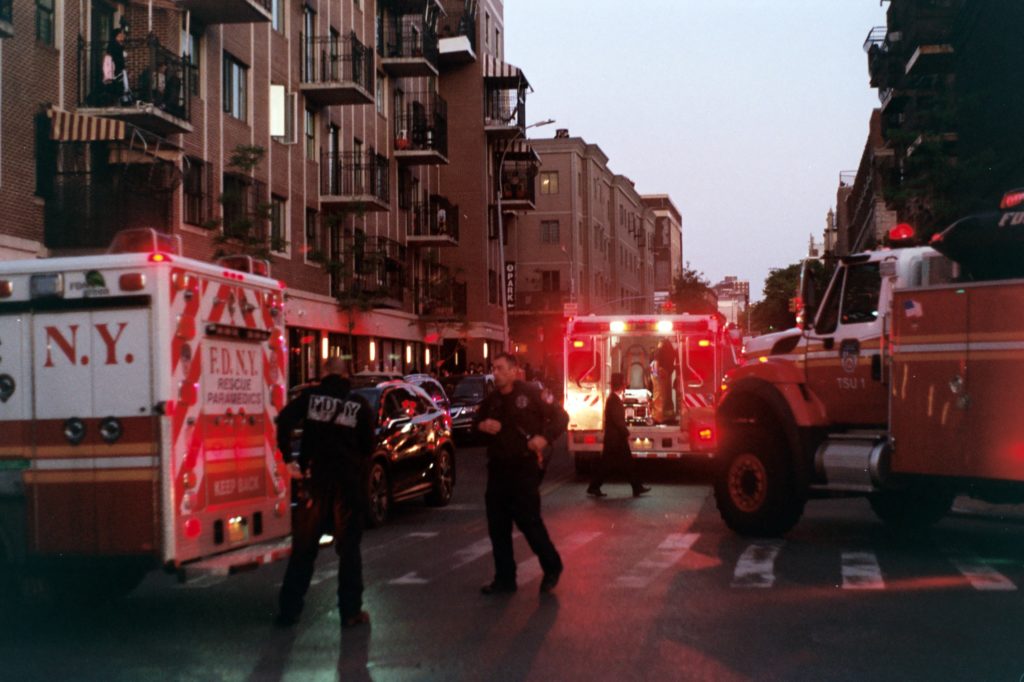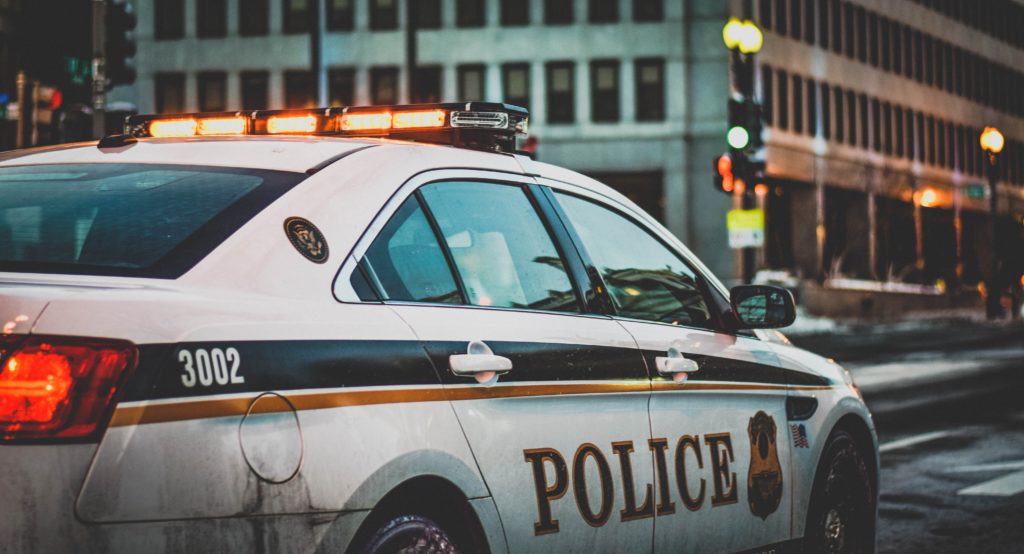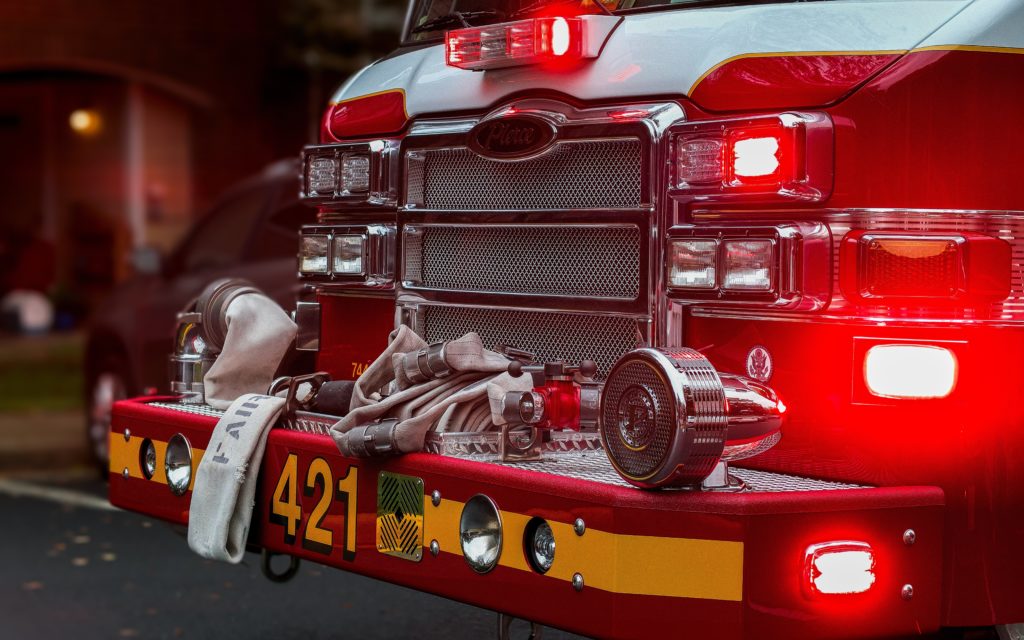
Sirens noise in American Cities: Loud and Harmful
Sirens are one of the main sources of noise pollution in American cities. City streets are filled with the sound of sirens. Whether it’s a fire truck, ambulance or police car, these emergency vehicles use sirens to get through traffic and alert pedestrians and drivers to their presence. While we often think of sirens as a necessary part of keeping our cities safe, there is growing evidence that they may be doing more harm than good.
Excessive noise from sirens can be harmful to pedestrians and neighbors, while usually not reducing the time of response as much as we might think.
Some alternative sirens, using duo-tone frequencies, are being developed and tested, and cities such as New York are fighting to make them mandatory in order to bring down the noise of its streets.
How loud are sirens?
The volume of sirens in American cities ranges from 95 dB up to 120 dB. Remember sounds above 90 dB can cause permanent damage to your hearing if exposed to them for long periods of time or regularly (every day). Not only that, but the threshold of sound discomfort is at 110 dB. At this point we instinctively want to cover our ears. And the threshold of pain is at 130 dB.
It is true that sirens are meant to be heard from relatively far away, in order to alert traffic ahead of their presence. But we must not forget that fire trucks, ambulances and police cars also pass near pedestrians walking on sideways, often at no more than a few feet distance.
We tend to believe that anything goes when it comes to putting out a fire, saving a life, or enforcing the law, but the excessive volume of fire trucks, ambulances and police sirens can be harmful to pedestrians and neighbors, while usually not reducing the time of response as much as we might think.
Studies have shown that the current use of sirens in cities only reduces the time to the scene of a call by 3 minutes in the best case, 42 seconds in the worst. In fact, in some particular runs, the use of sirens may even add minutes to the response time, as drivers often don’t know which way to go or what to do when they hear a siren approaching.
If we want to dive further into the issue, not all sirens are the same. The frequencies they use or how they are positioned on the vehicle can also have an impact on how we perceive them. So let’s take a look at different types of sirens one by one.
Police car siren noise

Police car sirens are usually a little lower end of the spectrum, producing around 95-100 dB, but they can be some of the most annoying because of the, “melody” if you will, that they use, which is designed to be heard over long distances. This sound can be particularly difficult for people with anxiety or sensory processing disorders.
Another reason why police car sirens can be perceived as louder, is because the siren is usually mounted at a low position on the front bumper of the car, which makes the sound waves reach us directly. The police car itself is also relatively small in size, so it doesn’t absorb almost any of the vibration generated by the siren.
Ambulance siren noise

Ambulances are next on the scale, often reaching readings of 105 dB.
Ambulance sirens are sometimes perceived as having lower volume than police cars though, because the siren is usually positioned on top of the vehicle, above a person’s height, and therefore the sound waves don’t hit us directly when we are close to the ambulance. The larger size of the vehicle also allows it to absorb a bit more of the vibrations generated by the siren.
Fire truck siren noise

Fire trucks are without a doubt some of the loudest vehicles on the road, with sirens that can produce up to 120 dB. That’s as loud as a jet taking off from an airport! Louder than a chainsaw or rock concert They also use a sound pattern similar to the ones of police cars, which is impossible to ignore.
Why make fire trucks sirens louder you might be asking yourself? Well, the reasoning is that the engine of a large fire truck will already be noisy, so the siren needs to be louder in order to overpower that sound.
It also does not help that most fire trucks have their siren mounted on their front bumper, like police cars, very close to the level of a person sitting or walking by.
The main reason why fire truck sirens are so loud is that they need to be heard over the sound of the engine, which can be quite noisy itself. The siren is also positioned at the front of the vehicle, close to the ground, so that the sound waves hit us directly when we are close to
How can noise pollution coming from sirens be reduced?
As awareness of the negative effects of noise pollution grows, cities are starting to look for alternatives. In 2018, the city of New York began testing out a new type of siren that uses two tones instead of one. These “duo-tone” sirens, which are already the norm in most European cities, are designed to be more directional, so that drivers and pedestrians can tell where they’re coming from, and they are also lower in volume, around 90 dB, which is lower than the volume of any current siren out there in NY.
So far, the results have been promising, and the city is hoping to make the switch to duo-tone sirens mandatory in the near future.
Manhattan City Council Members (Helen K. Rosenthal, Carlina Rivera , Margaret S. Chin, Ben Kallos, Brad S. Lander, Laurie A. Cumbo, Keith Powers , Diana I. Ayala, Karen Koslowitz) are leading a bill to make the use of high-low sirens mandatory, and to also limit their volume to 90 dB.
Remember that the relationship between sound intensity and perceived volume is logarithmic, which means that reducing the volume of sirens from 100-120 dB to 90 dB would actually be a huge change!
A study in 2016 found that even a 5 dB reduction in the volume of sirens could have a massive impact in people’s health. This also means billions (with a B) of dollars could be saved in health-care costs.
Conclusion
So, if sirens are so harmful and not even that effective, why do we keep using them? Well, for one thing, they’re ingrained in our culture. We’ve been using sirens since the early 1900s, and they’ve become so commonplace that it’s hard to imagine a world without them.
Efforts like the ones taking place at the New York City Council are a step in the right direction, and if successful, the passing of this bill could be a major step forward in reducing noise pollution in American cities.

[…] Ambulance, police and fire truck sirens are another city noise that can be hard to escape. These sounds are designed to be loud so that they can be heard above the city din. And while they might not be as constant as traffic or construction noise, they can still be very jarring when you hear them. […]
[…] in the city”. This means that you have to acknowledge NYC is already a noisy city by itself: sirens noise, traffic or even helicopters can already bother you everyday. So let’s say that when a neighbor […]
[…] by traffic noise, you’ve probably noticed that not all vehicles are equally noisy. Other than emergency vehicles blasting their sirens as they make their way through traffic, motorcycles tend to be some of the loudest vehicles on the […]
[…] we can’t help the feeling that the street comes in with us. People walking by, traffic noise, sirens, construction, dogs barking… and even if our building manages to isolate us from the outside […]
[…] isn’t just something we should worry about at home when we are trying to get some rest and a fire truck goes by blasting its sirens. Companies should be looking at acoustic comfort very carefully as well, as getting it wrong could […]
[…] modern era are familiar with. Although not nearly as pressing a concern as construction noise or blasting sirens going up and down the streets all day long, it’s one that’s fairly relatable in today’s world […]
[…] The number of cars only continued to grow from then on, as production costs decreased. At some point even having multiple cars in one family started to become a common thing, and the streets of cities were flooded with these new machines, which came with the promise of being able to travel distances before unimaginable in short periods of time, but it also brought a new source of noise into our lives, and we are not only talking about their engines, the honking of horns is also an important source of noise pollution, without forgetting about the loud sirens from ambulances, firetrucks, and other emergency services. […]
[…] surrounded by nature, where birds wake you up every morning, you will be much more aware of that ambulance passing by or some construction going on for too […]
[…] who operate ambulances and firetrucks face approximately 120 dB of noise, particularly when the sirens are turned on and the vehicles are in […]
[…] sources, including traffic, take-offs, landings and fly-overs from one of its 3 airports, events, sirens, etc. That being said, the majority of complaints are about barking dogs or late-night loud […]